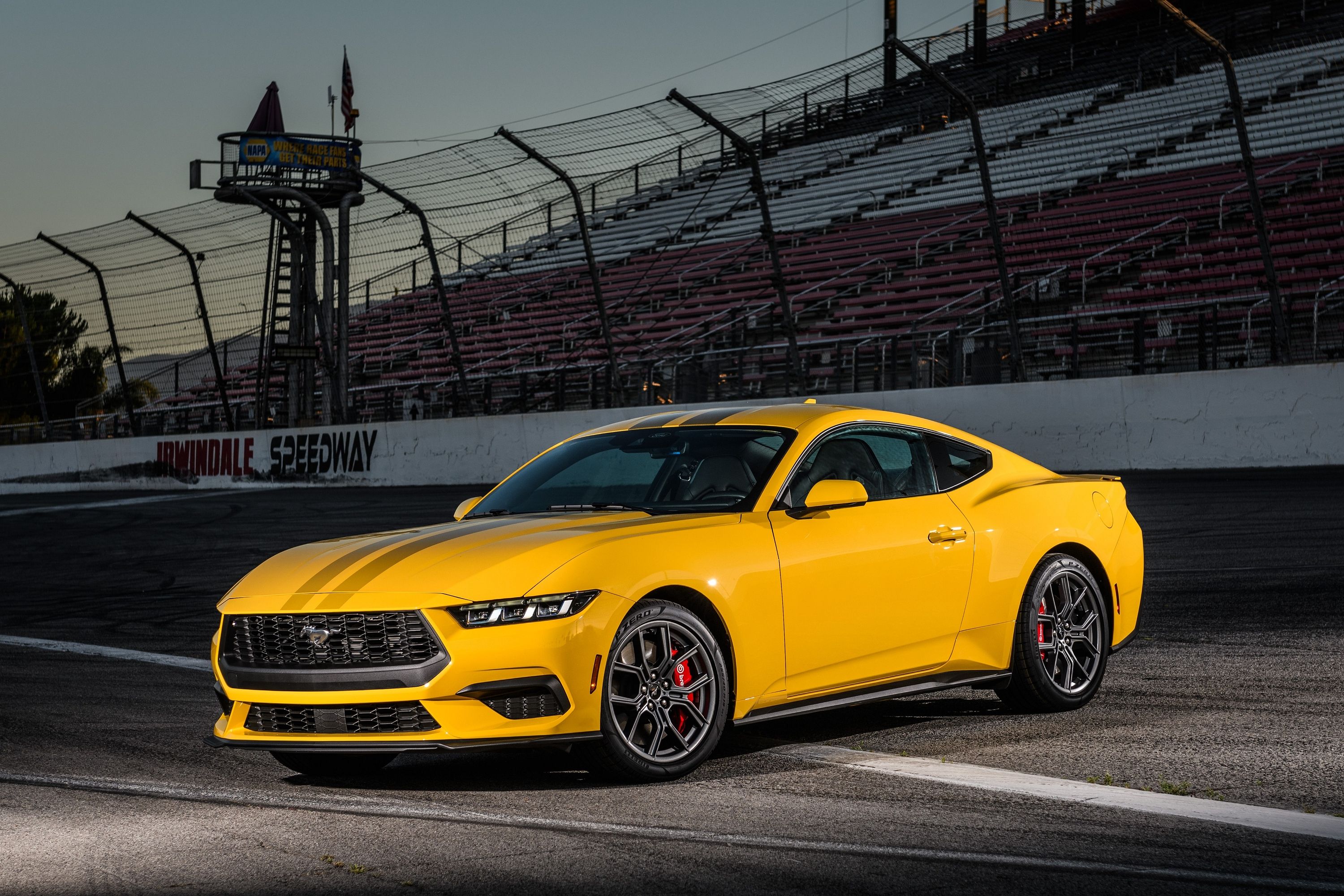
There's something Ford has right now that Chevy doesn't: a shred of good sense. It hasn't always been this way, but right now the world is crumbling around Detroit's Big Three. GM slashed jobs just a year and a half after Ford fired Mark Fields and became a mobility company, hoping that would stop it from becoming yet another American carmaker to file for bankruptcy or to be diluted with a foreign brand. Now, Detroit is slaughtering sedans left and right just to stay profitable.
In the midst of that chaos, Chevy has given the face of its new trucks, SUVs, and Camaro an aggressively modern flavor-an outfit that absolutely ruins the sixth-gen Camaro worse than the Pinto platformed ruined the Mustang II. But in the short-lived here and now, there exists a Mustang that does't turn its back on heritage like Camaro has. Its name is Bullitt, and it's the best Mustang Ford has ever built.
Let me clue you in on why I can say that with confidence-in full knowledge that a $55,940 GT350 can blow the $51,290 Bullitt off a race track and that plenty of other performance coupes in the Bullitt's price range aren't based on a $26,000 Mustang EcoBoost. A lot of the Bullitt love can be attributed to its looks. That realization set in after Ford lent me a 2019 Bullitt Mustang for a week-painted Dark Highland Green because any other color on a Bullitt is sacrilege-and kept growing despite the fact Ford has already sent me a lot of Mustangs (including the GT350) and that I had already driven the Bullitt at its own first drive reveal.
It was that first up-close experience that I learned how subtle changes to the Mustang's exterior can make or break the perception of a vehicle's soul, but this time around I had a week to savor the car. A week to notice how the shape of the 2019 Bullitt's grille has almost nothing to do with the original Bullitt Mustang.
Some of Ford's current grilles look more like a lawsuit by Aston Martin waiting to happen than a callback to Steve McQueen's 1968 Charger-chaser. But you know what? It works in Ford's favor this time. Around the grille there's a chrome border that looks like the event horizon of a black hole sucking air into an upgraded 87-mm throttle body-a Coyote V8 with the appetite of the GT350's 5.2-liter Voodoo. The rest of the chrome borders aren't thrown around liberally either. This is a gentleman's car and not a boy's toy, so you'll spot the rest of the shiny stuff on each of the four wheels and at the edge of the cockpit's side windows, calling attention to the human aspect of Bullitt.
The only bright flash of color you'll see lies under the spokes of black 19-inch wheels. Red Brembo brakes that hint at the stopping power hiding under the body's formal attire like clear earpieces and dark glasses on a Secret Service agent.
To most car-aware people on the street, the Bullitt's muted look reeks of old-school sex appeal a-la George Clooney or Audrey Hepburn. One friend who observed me climb into the Bullitt from afar later asked me when I had gotten an Aston Martin. Mix-ups like that happen because each of the Bullitt's styling touches get processed by the subconscious and registered as an inability to take eyes off the body-all before the fateful moment the clutch goes in, a hand slides the cueball shifter into neutral, and the red-ringed starter button is pressed.
Yes, a Ferrari sounds smoother and sure, the Challenger Hellcat wakes up sounding angrier on a cold morning, but only watching the 10-minute 54-second chase scene that made Bullitt famous can prepare modern ears for the way carbureted engines can sound raucous and refined at the same time. Even if you're too young to see nostalgia play a part, the paradoxical roar of polite anger never fails to tickle a grin out of the most hard-headed cynics.
And the Bullitt's exhaust note fits its personality perfectly. It sounds effortlessly cool throughout all but the quietest of the active exhaust system's modes. Unlike many muscle cars that yell like a post-pubescent teenager throwing a tantrum with the newfound bass in their voice, the Bullitt's roar sounds like it's been tuned for pleasure and bravado rather than brute intimidation. The fact that that voice represents a truly intimidating 480 horsepower and 420 lb-ft of torque only fits the exterior styling better. It helps differentiate the car from the plethora of high-powered special edition Mustangs that have galloped out of Flat Rock throughout the Pony Car's close to 55 years of life, which is why it holds a special place in the lineup.
It's the driver's car of the lot, the Mustang that strikes the right balance between all-out performance and comfort, the one that has the right amount of wiggle to slide around banked San Francisco corners but enough control to chase soup'd-up Chargers through Burbank's winding hills.
Sure, the majority of upgrades are made only to the body and the drivetrain, but they're enough to transform the Mustang into a car that brings the most joy to the driving experience. It doesn't live for track days or loudly advertise its owner's lack of maturity with racing stripes. Instead, the Bullitt delivers joy with buttery shifts from a six-speed manual and coaxes nods of approval from onlookers who look at the beautiful body not out of jealousy, but out of a desire to be the kind of person worthy of such a machine.
The Bullitt is not a status symbol that everyone can buy no matter how good or bad a person (or driver) they are, it's a privilege earned by those who live with good hearts and well-intentioned souls, for those who know the finer things in life but aren't afraid to roll up their sleeves and let horsepower crush villains when evil comes knocking.
